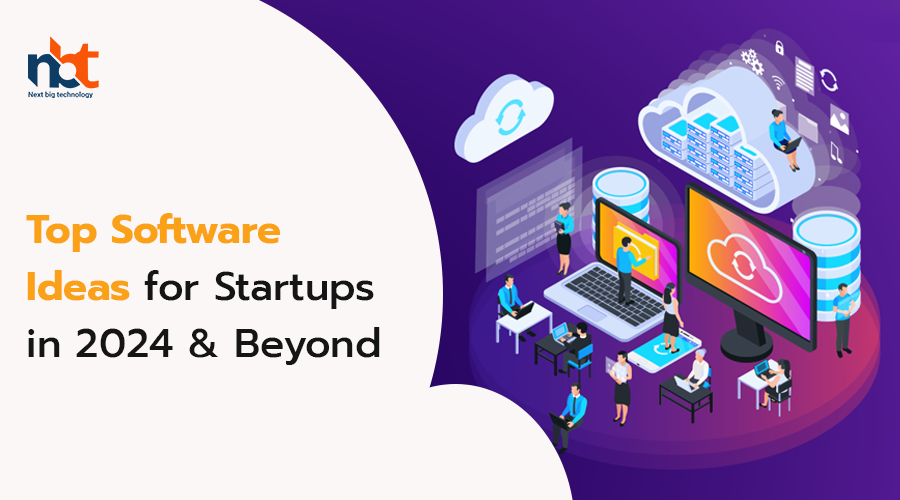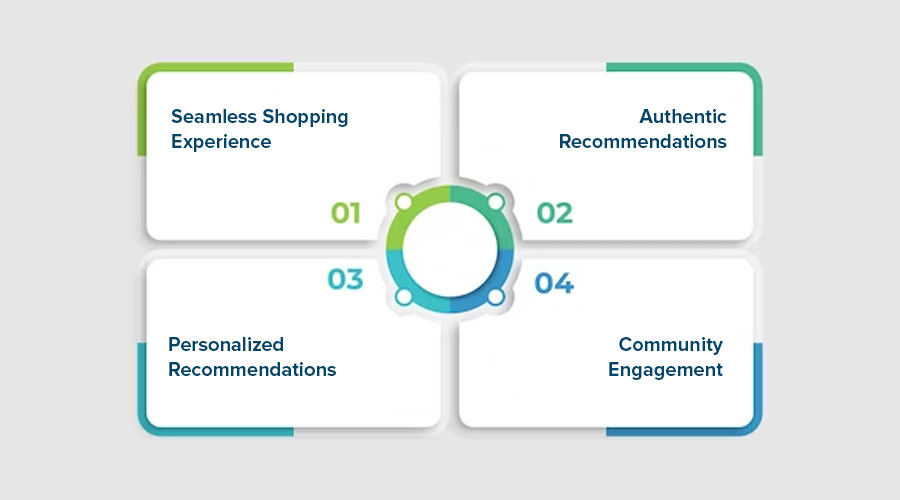Table of Contents
AI-Powered Personalized Recommendations
In today’s digital age, the sheer volume of content available online can be overwhelming. Whether it’s streaming platforms, e-commerce websites, or news outlets, consumers are inundated with choices at every turn. However, amidst this abundance, the challenge lies in discovering content that truly resonates with individual preferences and interests. This is where AI-powered personalized recommendations come into play, revolutionizing the way we discover and engage with content.
Gone are the days of generic, one-size-fits-all recommendations. With advancements in artificial intelligence and machine learning, companies now have the ability to analyze vast amounts of data to understand user behavior, preferences, and patterns. This wealth of information enables AI algorithms to generate highly personalized recommendations tailored to each user’s unique tastes and preferences.
One of the most significant benefits of AI-powered personalized recommendations is their ability to enhance user experience. By providing relevant content suggestions, companies can help users discover new products, services, or entertainment options that align with their interests, thereby increasing engagement and satisfaction. Whether it’s suggesting a new TV series based on past viewing habits or recommending products similar to ones previously purchased, AI algorithms can deliver a more personalized and enjoyable user experience.
Moreover, AI-powered recommendations also benefit businesses by driving revenue and increasing customer loyalty. By presenting users with products or content they are more likely to be interested in, companies can increase conversion rates and ultimately boost sales. Additionally, personalized recommendations can foster a sense of loyalty and trust among users, as they feel understood and valued by the platform or brand.
Furthermore, AI-powered recommendations have the potential to revolutionize content discovery across various industries. In the realm of e-commerce, for example, personalized product recommendations can significantly improve the online shopping experience by helping users find items that match their preferences and style. Similarly, in the realm of entertainment, streaming platforms can leverage AI algorithms to suggest movies, TV shows, or music based on a user’s viewing or listening history.
However, despite the numerous benefits of AI-powered recommendations, it’s essential to address concerns regarding privacy and data security. As AI algorithms rely on vast amounts of user data to generate personalized recommendations, it’s crucial for companies to prioritize data protection and transparency. By implementing robust privacy measures and allowing users to control their data, companies can build trust and confidence among their user base.
Blockchain for Secure Transactions and Smart Contracts
In today’s rapidly evolving digital landscape, the quest for secure and transparent transactions has never been more pressing. Enter blockchain technology, a groundbreaking innovation that is reshaping the way we conduct business and exchange value online. With its decentralized nature and cryptographic security features, blockchain has emerged as a game-changer for ensuring trust and efficiency in various industries, from finance to supply chain management. In this article, we delve into the intricacies of blockchain, its role in facilitating secure transactions, and its application in smart contracts.
Understanding Blockchain Technology:
At its core, blockchain is a distributed ledger technology that enables the recording and verification of transactions across a network of computers. Unlike traditional centralized systems, where a single entity controls the database, blockchain operates on a decentralized network, wherein each participant (or node) maintains a copy of the ledger. This decentralization ensures transparency, as all transactions are visible to every participant, eliminating the need for intermediaries and reducing the risk of fraud or manipulation.
Security Features of Blockchain:
One of the key attributes of blockchain is its robust security mechanism, which relies on cryptographic techniques to safeguard data integrity and prevent unauthorized access. Each transaction is cryptographically linked to the previous one, forming a chain of blocks that are immutable and tamper-resistant. Moreover, consensus algorithms such as proof-of-work (PoW) or proof-of-stake (PoS) ensure that transactions are validated by the network, further enhancing security and trust.
Benefits of Blockchain for Secure Transactions:
The adoption of blockchain technology offers numerous benefits for ensuring secure transactions:
- Transparency: Every transaction recorded on the blockchain is transparent and verifiable by all participants, enhancing trust and accountability.
- Immutability: Once a transaction is added to the blockchain, it cannot be altered or deleted, providing a reliable audit trail and reducing the risk of fraud.
- Decentralization: The decentralized nature of blockchain eliminates the need for intermediaries, thereby reducing costs and improving efficiency in transactions.
- Enhanced Security: Cryptographic encryption and consensus mechanisms make blockchain highly secure, mitigating the risk of data breaches and cyber attacks.
Smart Contracts: Automating Transactions with Blockchain
In addition to secure transactions, blockchain enables the execution of smart contracts, self-executing agreements with predefined terms and conditions. Smart contracts are encoded with logic that automatically triggers actions when certain conditions are met, without the need for intermediaries or manual intervention. This not only streamlines processes but also reduces the potential for errors and disputes.
Applications of Blockchain and Smart Contracts:
The potential applications of blockchain and smart contracts are vast and diverse, spanning across industries such as:
- Finance: Facilitating faster and cheaper cross-border payments, enabling microlending, and automating regulatory compliance.
- Supply Chain Management: Tracking the provenance of goods, ensuring product authenticity, and optimizing logistics through transparent and traceable transactions.
- Real Estate: Streamlining property transactions, automating escrow services, and enabling fractional ownership through tokenization.
- Healthcare: Securing patient data, ensuring compliance with privacy regulations, and enabling interoperability among healthcare providers.
- Legal: Automating contract execution, facilitating dispute resolution through transparent and immutable records, and reducing legal costs.
Virtual Reality (VR) Training and Simulation Platforms
In recent years, Virtual Reality (VR) has transcended its initial perception as a mere gaming technology to become a game-changer in various industries, particularly in the realm of training and simulation. This cutting-edge technology has opened up new avenues for immersive learning experiences that were previously unimaginable. From military simulations to medical training and beyond, VR training platforms are revolutionizing the way we acquire and retain knowledge.
One of the most significant advantages of VR training and simulation platforms is their ability to provide realistic, hands-on experiences in a safe and controlled environment. Traditional training methods often involve theoretical instruction or limited practical exercises, which may not adequately prepare individuals for real-world scenarios. VR bridges this gap by allowing users to interact with lifelike simulations that closely mimic the situations they will encounter in their respective fields.
Take, for example, the healthcare industry. Medical professionals are required to make critical decisions under pressure, often in high-stakes situations. VR training platforms offer medical students and practitioners the opportunity to practice surgical procedures, diagnose illnesses, and respond to emergencies in a risk-free virtual setting. By repeating these scenarios multiple times, learners can refine their skills, build confidence, and ultimately improve patient outcomes.
Similarly, the aviation industry has embraced VR training to enhance pilot training programs. Pilots can undergo simulated flights in various weather conditions, navigate complex airspace, and troubleshoot mechanical issues—all from the safety of a virtual cockpit. These immersive experiences enable pilots to develop their flying skills without the associated costs and risks of traditional flight training.
Beyond healthcare and aviation, VR training platforms have applications in fields such as manufacturing, construction, and customer service. In manufacturing, workers can practice operating machinery or assembly processes in a virtual factory environment, reducing the likelihood of accidents and errors on the shop floor. Construction companies use VR simulations to train workers in safety protocols, equipment operation, and construction techniques before they set foot on a real construction site. Even in customer service, employees can undergo VR-based simulations to improve their communication skills and learn how to handle difficult situations with empathy and professionalism.
From an educational standpoint, VR training platforms cater to different learning styles and preferences. Visual and kinesthetic learners, in particular, benefit from the hands-on nature of VR simulations, as they can engage with content in a way that resonates with them. Additionally, VR can make learning more engaging and enjoyable, leading to higher levels of retention and knowledge transfer.
In terms of scalability and accessibility, VR training platforms offer unparalleled flexibility. With advancements in VR technology, training modules can be delivered remotely, allowing individuals to access learning materials from anywhere in the world. This is especially beneficial for organizations with dispersed teams or limited physical training facilities. Furthermore, VR simulations can be easily updated and customized to reflect evolving industry standards or specific training objectives, ensuring that learners receive the most relevant and up-to-date instruction.
As we look to the future, the potential of VR training and simulation platforms is virtually limitless. With ongoing innovation and refinement, these technologies will continue to transform how we learn, train, and perform in diverse professional settings. Whether it’s preparing soldiers for combat, guiding surgeons through complex procedures, or equipping employees with essential skills, VR is paving the way for a more immersive, effective, and efficient approach to training and education. Embracing this technology today means preparing for the challenges and opportunities of tomorrow.
Health-Tech Solutions for Remote Patient Monitoring
In the ever-evolving landscape of healthcare, technological advancements continue to redefine the way patients receive care. One of the most significant innovations in recent years is the emergence of health-tech solutions for remote patient monitoring (RPM). This revolutionary approach holds immense promise in enhancing patient outcomes, improving access to healthcare, and reducing healthcare costs. Let’s delve deeper into the world of health-tech solutions for remote patient monitoring and explore their transformative impact.
Remote patient monitoring leverages cutting-edge technologies to enable healthcare providers to monitor patients’ health outside of traditional clinical settings, such as hospitals and clinics. Through wearable devices, mobile apps, and remote monitoring platforms, patients can transmit vital health data in real-time to healthcare professionals, allowing for timely intervention and personalized care.
One of the primary benefits of health-tech solutions for RPM is their ability to empower patients to take an active role in managing their health. With wearable devices equipped with sensors to track vital signs, medication adherence, and lifestyle habits, patients gain valuable insights into their health status and can make informed decisions to maintain or improve their well-being. This level of engagement not only fosters a sense of autonomy but also promotes proactive healthcare management, leading to better health outcomes in the long run.
Furthermore, health-tech solutions for RPM play a crucial role in enhancing the efficiency of healthcare delivery. By remotely monitoring patients’ health metrics, healthcare providers can identify potential issues early on, preventing complications and reducing the need for hospital readmissions. This proactive approach not only improves patient care but also alleviates the burden on healthcare systems, particularly in the face of growing demand and resource constraints.
Moreover, health-tech solutions for RPM hold immense promise in addressing healthcare disparities and improving access to care, particularly in underserved communities. By leveraging telemedicine platforms and remote monitoring technologies, patients residing in remote areas or those with limited mobility can receive high-quality care without the need for frequent in-person visits. This not only improves patient outcomes but also promotes health equity by ensuring that all individuals have access to the care they need, regardless of geographical barriers.
From a healthcare economics perspective, health-tech solutions for RPM have the potential to generate significant cost savings by reducing unnecessary hospitalizations, emergency room visits, and healthcare expenditures. By proactively managing chronic conditions and preventing complications, healthcare providers can lower overall healthcare costs while improving the quality of care delivered to patients.
Sustainability Software for Carbon Footprint Tracking
In today’s rapidly evolving world, sustainability has emerged as a pivotal concern across industries. With climate change increasingly impacting our planet, businesses are under mounting pressure to reduce their carbon footprint. To navigate this challenge, many enterprises are turning to innovative solutions, such as sustainability software, to streamline their efforts towards environmental stewardship.
Sustainability software plays a vital role in helping organizations monitor, manage, and mitigate their carbon emissions. By leveraging advanced analytics and data visualization tools, these platforms enable businesses to gain deep insights into their environmental impact across various operational facets. From energy consumption to supply chain logistics, every aspect contributing to carbon emissions can be meticulously tracked and analyzed.
One of the key features of sustainability software is its ability to accurately measure carbon footprints. Through comprehensive data collection mechanisms, including real-time monitoring and automated data feeds, businesses can capture precise information about their greenhouse gas emissions. This granular level of data empowers companies to identify emission hotspots, pinpoint inefficiencies, and devise targeted strategies for reduction.
Moreover, sustainability software facilitates goal setting and progress tracking towards emission reduction targets. By establishing benchmarks and key performance indicators (KPIs), organizations can monitor their environmental performance over time. This not only fosters accountability but also drives continuous improvement initiatives aimed at achieving sustainability objectives.
Furthermore, sustainability software facilitates collaboration and transparency within supply chains. With increasing consumer demand for ethically sourced and environmentally friendly products, businesses are under pressure to ensure sustainability throughout their entire value chain. By integrating sustainability metrics into supplier assessments and audits, companies can encourage suppliers to adopt eco-friendly practices, thereby cascading sustainability efforts throughout the entire ecosystem.
Additionally, sustainability software aids in regulatory compliance by keeping abreast of evolving environmental regulations and reporting requirements. By automating data collection and report generation processes, businesses can ensure accuracy and timeliness in fulfilling their regulatory obligations. This not only minimizes the risk of non-compliance penalties but also enhances corporate reputation by demonstrating a commitment to environmental responsibility.
Augmented Reality (AR) for Enhanced Customer Experiences
In today’s fast-paced digital age, businesses are constantly seeking innovative ways to engage with their customers and stand out from the competition. Augmented Reality (AR) has emerged as a powerful tool for enhancing customer experiences, offering a unique blend of digital and physical interaction that captivates users like never before.
Augmented Reality, often abbreviated as AR, overlays digital information onto the real world through the use of smartphones, tablets, or specialized AR glasses. This technology has transformed the way consumers interact with brands, products, and services across various industries.
One of the most prominent applications of AR in enhancing customer experiences is in the retail sector. Imagine walking into a clothing store and using your smartphone to try on different outfits virtually without having to step into a fitting room. AR-powered virtual try-on solutions not only save time but also provide a fun and interactive shopping experience for customers.
Similarly, in the furniture industry, AR allows customers to visualize how a piece of furniture would look in their home before making a purchase. By simply pointing their device’s camera at a space, customers can place virtual furniture models and see how they fit in their living room or bedroom, helping them make more informed buying decisions.
In the automotive industry, AR is revolutionizing the way customers shop for cars. Car manufacturers and dealerships are leveraging AR technology to offer virtual test drives, allowing customers to experience different car models and features without leaving the showroom. This immersive experience not only enhances customer engagement but also helps dealerships showcase their vehicles in a more compelling manner.
Moreover, AR is reshaping the hospitality and tourism sector by offering travelers interactive experiences that bring destinations to life. With AR-powered travel apps, users can explore historical landmarks, discover hidden gems, and access real-time information about nearby attractions simply by pointing their device at the surroundings. This not only enhances the overall travel experience but also provides valuable insights and recommendations to travelers.
Furthermore, AR is making waves in the entertainment industry, with applications ranging from interactive museum exhibits to location-based AR games like Pokémon GO. These experiences blend the virtual world with the real world, creating immersive entertainment experiences that captivate audiences of all ages.
From retail to automotive, hospitality to entertainment, Augmented Reality is revolutionizing customer experiences across various industries. By offering immersive and interactive solutions, AR technology enables businesses to engage with their customers in new and innovative ways, ultimately driving customer satisfaction, loyalty, and revenue growth.
Cloud-Based Collaboration and Project Management
In today’s fast-paced business landscape, the ability to collaborate seamlessly and manage projects effectively is crucial for success. Traditional methods of collaboration and project management often prove cumbersome, leading to delays, miscommunication, and inefficiencies. However, with the advent of cloud-based solutions, organizations have found a powerful ally in streamlining their workflows and enhancing productivity.
Cloud-based collaboration and project management tools offer a plethora of benefits that empower teams to work smarter, not harder. By leveraging the cloud, teams can access and share documents, files, and data in real-time, regardless of geographical location. This eliminates the need for endless email chains and ensures that everyone is working on the latest version of a document, thereby reducing the risk of errors and inconsistencies.
One of the key advantages of cloud-based collaboration platforms is their ability to facilitate communication among team members. Whether it’s through instant messaging, video conferencing, or project-specific channels, these tools provide a centralized hub where team members can collaborate, exchange ideas, and provide feedback in real-time. This fosters a culture of transparency and collaboration, enabling teams to resolve issues quickly and keep projects on track.
Furthermore, cloud-based project management tools offer robust features that enable teams to plan, track, and manage projects with ease. From creating project timelines and assigning tasks to setting milestones and monitoring progress, these tools provide a comprehensive suite of functionalities that help teams stay organized and focused on their goals. Additionally, many cloud-based project management platforms offer integrations with other productivity tools, such as calendars, email clients, and task management apps, further enhancing efficiency and streamlining workflows.
Another notable advantage of cloud-based collaboration and project management tools is their scalability. Whether you’re a small startup or a multinational corporation, these tools can accommodate teams of all sizes and adapt to your changing needs. As your business grows, you can easily scale up your usage and add new users or features as required, without the need for expensive hardware upgrades or additional infrastructure.
Moreover, cloud-based solutions offer enhanced security features to safeguard your data and protect against cyber threats. With built-in encryption, multi-factor authentication, and regular security updates, these platforms provide peace of mind knowing that your sensitive information is safe and secure.
Data Analytics Platforms for Actionable Insights
In the ever-evolving landscape of business, data has become the new currency, and harnessing its potential has become imperative for success. Data analytics platforms have emerged as powerful tools, enabling organizations to derive actionable insights from vast and complex datasets. In this article, we delve into the realm of data analytics platforms, exploring their significance in driving informed decision-making and propelling business growth.
Understanding Data Analytics Platforms
Data analytics platforms are comprehensive software solutions designed to collect, process, analyze, and visualize data from various sources. These platforms utilize advanced algorithms, machine learning techniques, and statistical models to uncover patterns, trends, and correlations within data sets, empowering businesses to make data-driven decisions.
Key Features and Capabilities
Modern data analytics platforms offer a myriad of features and capabilities tailored to meet the diverse needs of businesses. These include:
- Data Integration: Seamless integration with multiple data sources, including databases, cloud storage, social media, IoT devices, and more, ensuring comprehensive data coverage.
- Data Preparation: Advanced data cleansing, transformation, and enrichment functionalities to ensure data accuracy and consistency.
- Advanced Analytics: Robust analytics tools for descriptive, diagnostic, predictive, and prescriptive analytics, enabling organizations to gain deeper insights into past performance, understand present conditions, and forecast future trends.
- Visualization: Intuitive visualization tools to create interactive dashboards, reports, and charts, facilitating easy interpretation and communication of insights across the organization.
- Scalability and Performance: Scalable architecture and high-performance computing capabilities to handle large volumes of data and complex analytical workloads efficiently.
- Security and Compliance: Robust security measures, including data encryption, access controls, and compliance with regulatory standards such as GDPR and HIPAA, to safeguard sensitive information.
- Integration with AI and ML: Integration with artificial intelligence (AI) and machine learning (ML) algorithms for automated analysis, anomaly detection, and intelligent decision support.
Benefits of Data Analytics Platforms
The adoption of data analytics platforms offers numerous benefits to organizations, including:
- Informed Decision-Making: By providing timely and accurate insights, data analytics platforms empower decision-makers to make informed and strategic decisions, leading to improved business outcomes.
- Enhanced Operational Efficiency: By automating repetitive tasks, streamlining processes, and identifying areas for optimization, data analytics platforms help enhance operational efficiency and resource utilization.
- Competitive Advantage: Organizations that leverage data analytics gain a competitive edge by identifying market trends, understanding customer behavior, and capitalizing on emerging opportunities ahead of their competitors.
- Risk Mitigation: By identifying potential risks and vulnerabilities early on, data analytics platforms enable organizations to proactively mitigate risks, prevent fraud, and ensure compliance with regulatory requirements.
- Customer Insights: By analyzing customer data, including demographics, preferences, and buying behavior, organizations can gain valuable insights to personalize marketing campaigns, improve customer satisfaction, and drive customer loyalty.
Telemedicine Platforms for Accessible Healthcare
In an era where technology is transforming every aspect of our lives, healthcare is no exception. Telemedicine platforms have emerged as a beacon of accessible healthcare, bridging the gap between patients and healthcare providers regardless of geographical barriers. This innovative approach to medical care is revolutionizing the way we perceive and access healthcare services.
Telemedicine platforms leverage digital communication tools to connect patients with healthcare professionals remotely. Through secure video calls, phone consultations, and messaging systems, patients can seek medical advice, receive prescriptions, and even undergo diagnostic assessments from the comfort of their homes. This convenience is particularly beneficial for individuals with mobility limitations, those residing in rural areas with limited access to healthcare facilities, and busy professionals who struggle to find time for traditional clinic visits.
One of the key advantages of telemedicine platforms is their ability to enhance healthcare accessibility. In regions where healthcare resources are scarce, telemedicine provides a lifeline, allowing patients to consult specialists and receive timely medical intervention without the need for extensive travel. Moreover, telemedicine eliminates the barriers posed by physical distance, enabling patients to access expert medical advice irrespective of their location.
Furthermore, telemedicine platforms promote proactive healthcare management by facilitating regular check-ups and monitoring of chronic conditions. Patients can schedule virtual appointments with their healthcare providers to discuss treatment plans, track progress, and address any concerns, fostering a continuous and personalized approach to healthcare delivery. This proactive model not only improves patient outcomes but also reduces the burden on overstretched healthcare systems.
Moreover, telemedicine platforms offer a cost-effective alternative to traditional healthcare delivery models. By minimizing the need for in-person consultations and hospital visits, telemedicine reduces healthcare expenses associated with travel, accommodation, and facility fees. This affordability makes quality healthcare more accessible to economically disadvantaged individuals who may otherwise forego essential medical services due to financial constraints.
Additionally, telemedicine platforms prioritize patient privacy and data security, ensuring that sensitive medical information remains confidential and protected from unauthorized access. With robust encryption protocols and stringent compliance measures in place, patients can confidently engage with healthcare providers knowing that their personal data is safeguarded against cyber threats.
Despite its numerous benefits, telemedicine is not without its challenges. Issues such as technological barriers, disparities in internet access, and concerns regarding the quality of remote diagnosis and treatment persist. However, ongoing advancements in telecommunication infrastructure and healthcare technologies are gradually addressing these challenges, making telemedicine increasingly accessible and reliable.
E-commerce Platforms with Integrated Social Commerce Features
In the ever-evolving landscape of online shopping, e-commerce platforms are continually seeking innovative ways to enhance user experience and drive sales. One such innovation that has gained significant traction in recent years is the integration of social commerce features directly into e-commerce platforms. This seamless fusion of e-commerce and social media functionalities has revolutionized the way businesses connect with their customers and sell their products online.
What exactly are these integrated social commerce features, and how do they benefit both businesses and consumers?
Understanding Integrated Social Commerce Features
Integrated social commerce features refer to the incorporation of social media elements, such as user-generated content, social sharing, and influencer marketing, within e-commerce platforms. Instead of treating social media and e-commerce as separate entities, these platforms blend them together to create a unified shopping experience.
These features typically include:
- Social Shopping Feeds: E-commerce platforms integrate social feeds directly into their interfaces, allowing users to discover products while browsing through posts and updates from friends and influencers.
- User Reviews and Ratings: Customers can share their shopping experiences and rate products directly on the platform, providing valuable feedback to other shoppers and building trust in the brand.
- Influencer Marketing: Brands collaborate with social media influencers to promote their products to a wider audience, leveraging the influencers’ credibility and reach to drive sales.
- Social Sharing Buttons: Users can easily share products they like with their social networks, expanding the brand’s visibility and driving traffic back to the e-commerce platform.
Benefits for Businesses
- Increased Exposure: By integrating social commerce features, businesses can tap into the vast audiences of social media platforms, reaching potential customers who may not have discovered them otherwise.
- Enhanced Engagement: Social elements such as user reviews and influencer endorsements encourage active participation from customers, fostering a sense of community around the brand.
- Improved Conversion Rates: When customers can seamlessly transition from browsing social media to making a purchase without leaving the platform, it reduces friction in the buying process and leads to higher conversion rates.
- Data-driven Insights: Social commerce features generate valuable data on customer behavior and preferences, which businesses can use to refine their marketing strategies and product offerings.
Benefits for Consumers
- Seamless Shopping Experience: Integrated social commerce features make it easier for consumers to discover, research, and purchase products without having to switch between multiple platforms.
- Authentic Recommendations: User reviews and influencer endorsements provide consumers with real-world insights into product quality and performance, helping them make informed purchasing decisions.
- Personalized Recommendations: By analyzing social data and user interactions, e-commerce platforms can deliver personalized product recommendations tailored to each individual’s interests and preferences.
- Community Engagement: Social commerce features foster a sense of community among like-minded shoppers, allowing them to share recommendations, advice, and experiences with each other.
Examples of Platforms with Integrated Social Commerce Features
- Instagram Shopping: Instagram allows businesses to tag products in their posts and stories, enabling users to purchase directly from the app without leaving the platform.
- Shopify: Shopify offers integrations with various social media platforms, allowing merchants to sell products directly on Facebook, Instagram, Pinterest, and more.
- Pinterest Buyable Pins: Pinterest’s Buyable Pins feature enables users to purchase products they discover on the platform with just a few taps, streamlining the buying process.
- Facebook Marketplace: Facebook Marketplace combines social networking with e-commerce, allowing users to buy and sell items within their local community.
Top Software Ideas for Startups Companies
In today’s dynamic business landscape, startups are constantly seeking innovative ways to disrupt markets and carve their niche. With the rapid advancement of technology, software has emerged as a pivotal tool for startups to streamline operations, enhance customer experiences, and drive growth. From fintech to healthcare, software solutions offer boundless possibilities for startups to thrive. Here are some top software ideas poised to revolutionize the startup ecosystem:
-
-
Next Big Technology:

Focus Area
- Mobile App Development
- App Designing (UI/UX)
- Software Development
- Web Development
- AR & VR Development
- Big Data & BI
- Cloud Computing Services
- DevOps
- E-commerce Development
Industries Focus
- Art, Entertainment & Music
- Business Services
- Consumer Products
- Designing
- Education
- Financial & Payments
- Gaming
- Government
- Healthcare & Medical
- Hospitality
- Information Technology
- Legal & Compliance
- Manufacturing
- Media
-
- Blockchain-Based Solutions: Blockchain technology holds immense potential for startups, especially in sectors like finance, supply chain, and healthcare. Implementing blockchain-based solutions can offer transparency, security, and efficiency in processes such as transactions, record-keeping, and identity verification. Startups can explore developing decentralized applications (DApps) or blockchain-based platforms to disrupt traditional industries and foster trust among stakeholders.
- HealthTech Platforms: The healthcare industry is ripe for disruption, and startups can capitalize on this by developing innovative HealthTech platforms. From telemedicine apps to remote patient monitoring systems, software solutions can bridge gaps in healthcare delivery, improve patient outcomes, and reduce costs. Startups can focus on areas like chronic disease management, mental health support, or personalized medicine to address evolving healthcare needs.
- E-commerce Personalization Tools: With the exponential growth of e-commerce, startups can gain a competitive edge by offering personalized shopping experiences to customers. Developing software solutions that leverage data analytics and machine learning can enable startups to understand consumer behavior, recommend relevant products, and optimize pricing strategies. By tailoring offerings to individual preferences, startups can enhance customer satisfaction and drive sales.
- Cybersecurity Solutions: As cyber threats continue to evolve, cybersecurity has become a paramount concern for businesses of all sizes. Startups can develop innovative cybersecurity solutions, such as threat detection software, secure authentication systems, or encryption tools, to safeguard sensitive data and protect against cyber attacks. By prioritizing cybersecurity, startups can build trust with customers and partners, positioning themselves as reliable and secure partners.
- Sustainability Tracking Platforms: With increasing emphasis on sustainability, startups can develop software solutions to help businesses track and reduce their environmental footprint. From carbon emissions tracking to waste management optimization, these platforms can provide valuable insights and actionable recommendations for businesses to operate more sustainably. Startups can capitalize on the growing demand for eco-friendly solutions and contribute to building a greener future.
- Education Technology (EdTech) Platforms: The education sector is undergoing a digital transformation, and startups can play a significant role by developing EdTech platforms. From online learning management systems to interactive educational content, software solutions can democratize access to quality education and enhance learning outcomes. Startups can focus on areas like skill development, personalized learning, or corporate training to cater to diverse educational needs.
FAQs On Software Ideas for Startups
In the dynamic realm of startups, software ideas hold immense potential. They serve as the backbone for innovative ventures, paving the way for groundbreaking solutions to modern-day problems. However, navigating through the intricacies of software ideation can be daunting, especially for budding entrepreneurs. To shed light on this topic, let’s delve into some frequently asked questions (FAQs) that often arise when brainstorming software ideas for startups.
1. What Constitutes a Viable Software Idea for a Startup? A viable software idea for a startup is one that addresses a genuine pain point or need in the market. It should offer a unique solution or significantly improve upon existing solutions. Moreover, the idea should have scalability potential, allowing the startup to grow and adapt as the market evolves.
2. How Can I Identify a Promising Software Idea? Identifying a promising software idea requires thorough market research and validation. Start by understanding your target audience and their pain points. Conduct surveys, interviews, and competitor analysis to gauge demand and identify gaps in existing solutions. Additionally, consider emerging trends and technologies that present new opportunities for innovation.
3. Should I Focus on B2B or B2C Software Ideas? The choice between B2B (business-to-business) and B2C (business-to-consumer) software ideas depends on various factors, including your expertise, market dynamics, and target audience. B2B software ideas often involve solving specific challenges faced by businesses, while B2C ideas cater to the needs and preferences of individual consumers. Evaluate the market demand, competition, and revenue potential to determine which segment aligns best with your startup’s goals.
4. How Important is the Technical Feasibility of a Software Idea? Technical feasibility is crucial when evaluating software ideas for startups. While ambitious ideas may seem appealing, they must be realistically achievable within the constraints of technology, resources, and expertise. Assess the complexity of development, required skills, and potential roadblocks to ensure that your team can execute the idea effectively.
5. Is it Necessary to Have a Unique Software Idea? While having a completely unique software idea can be advantageous, it’s not always necessary for startup success. Many successful startups thrive by improving existing solutions or addressing niche markets overlooked by larger competitors. Focus on differentiation, value proposition, and user experience to carve out a distinctive position in the market, even if your idea isn’t entirely novel.
6. How Can I Protect My Software Idea from Copycats? Protecting your software idea involves a combination of strategies, including intellectual property rights, confidentiality agreements, and building a strong brand reputation. Consider filing for patents or copyrights if your idea involves proprietary technology or unique algorithms. Additionally, maintain strict confidentiality within your team and when sharing information with potential partners or investors.
7. What Role Does Market Validation Play in Software Ideation? Market validation is essential for validating the demand and viability of your software idea before investing significant resources into development. Conduct pilot tests, MVP (Minimum Viable Product) launches, or crowdfunding campaigns to gauge user interest and gather feedback. Iterate based on user insights to refine your idea and increase its chances of success in the market.
Thanks for reading our post “Top Software Ideas for Startups in 2024 & Beyond”. Please connect with us to learn more about Best Top Software Ideas.
























